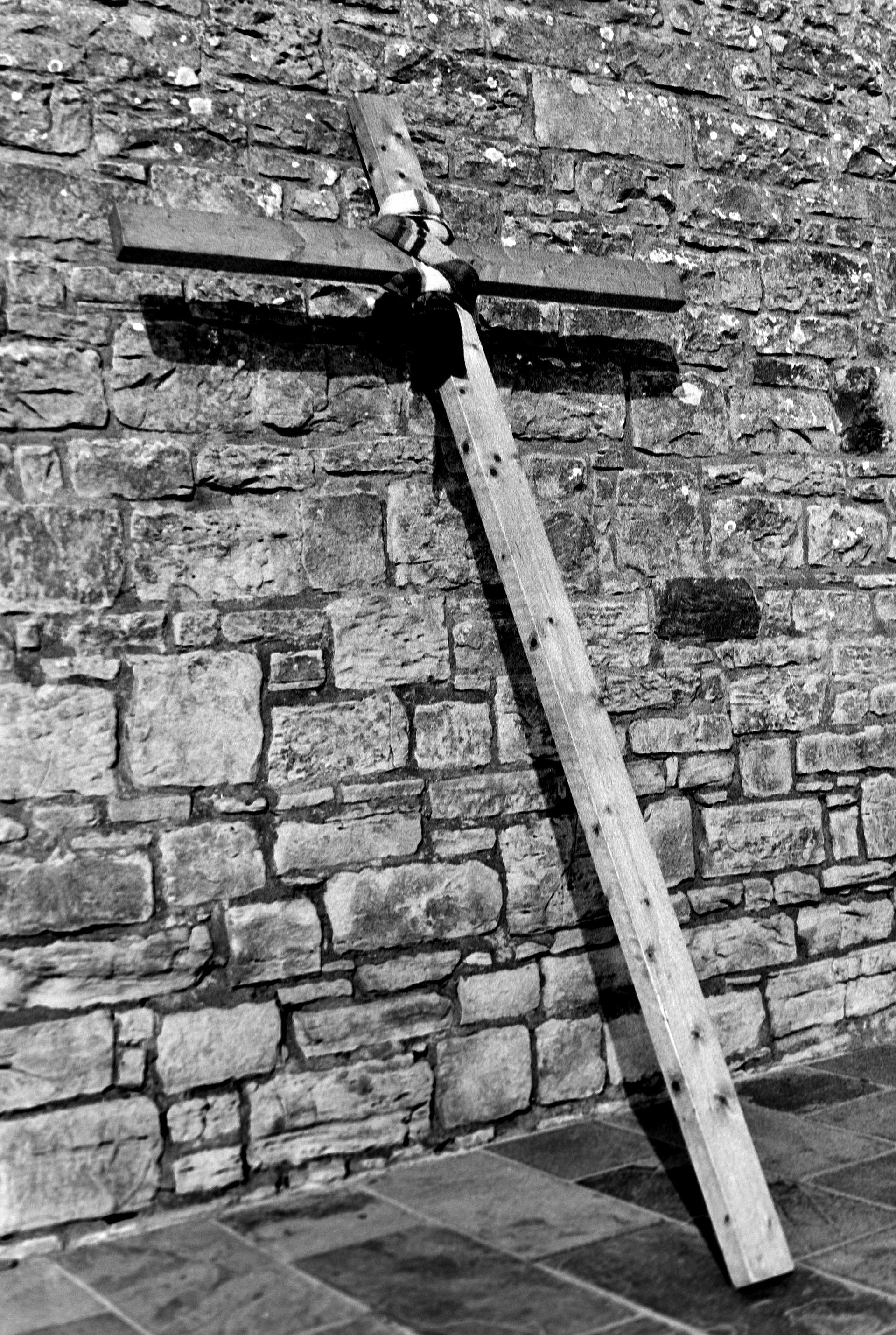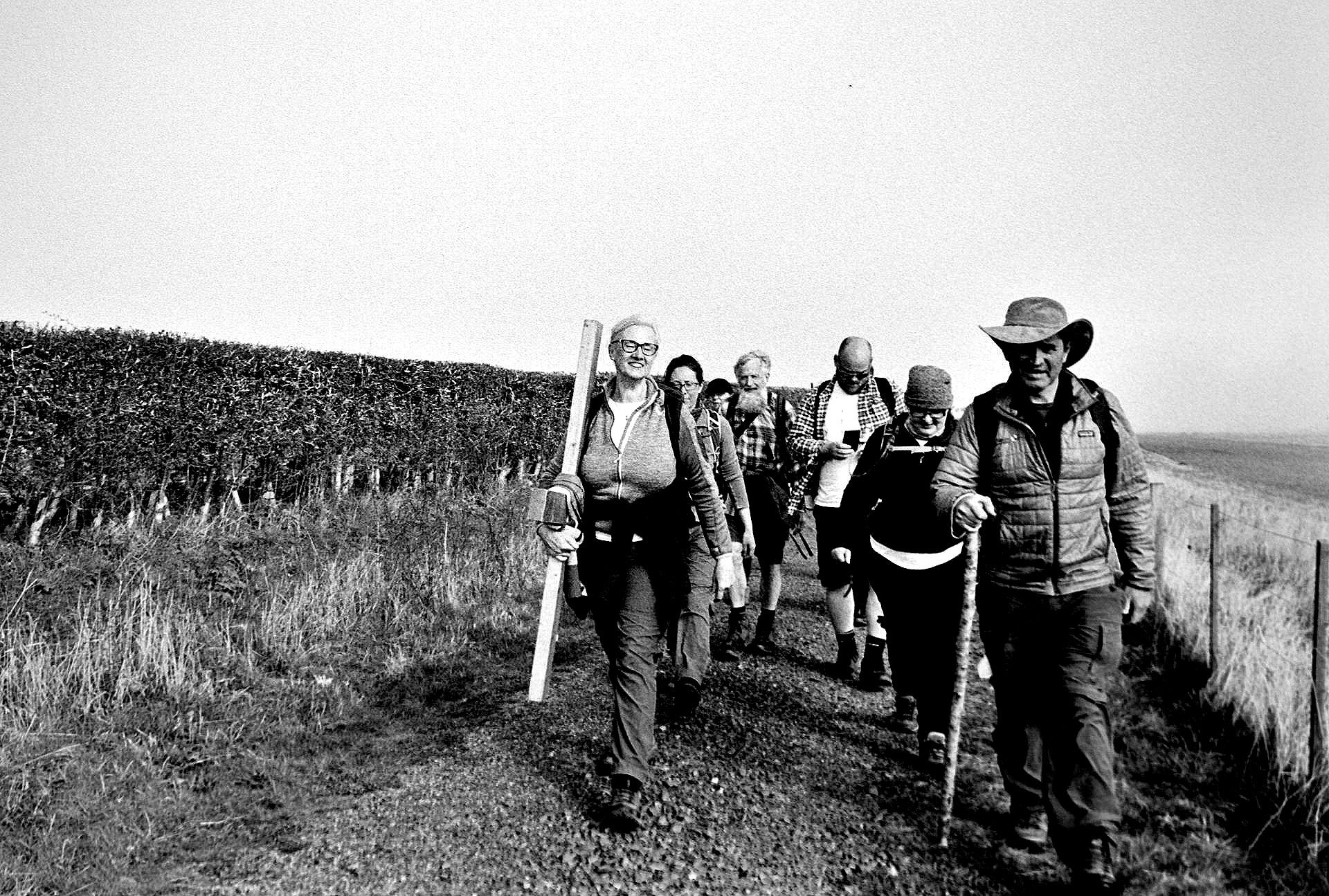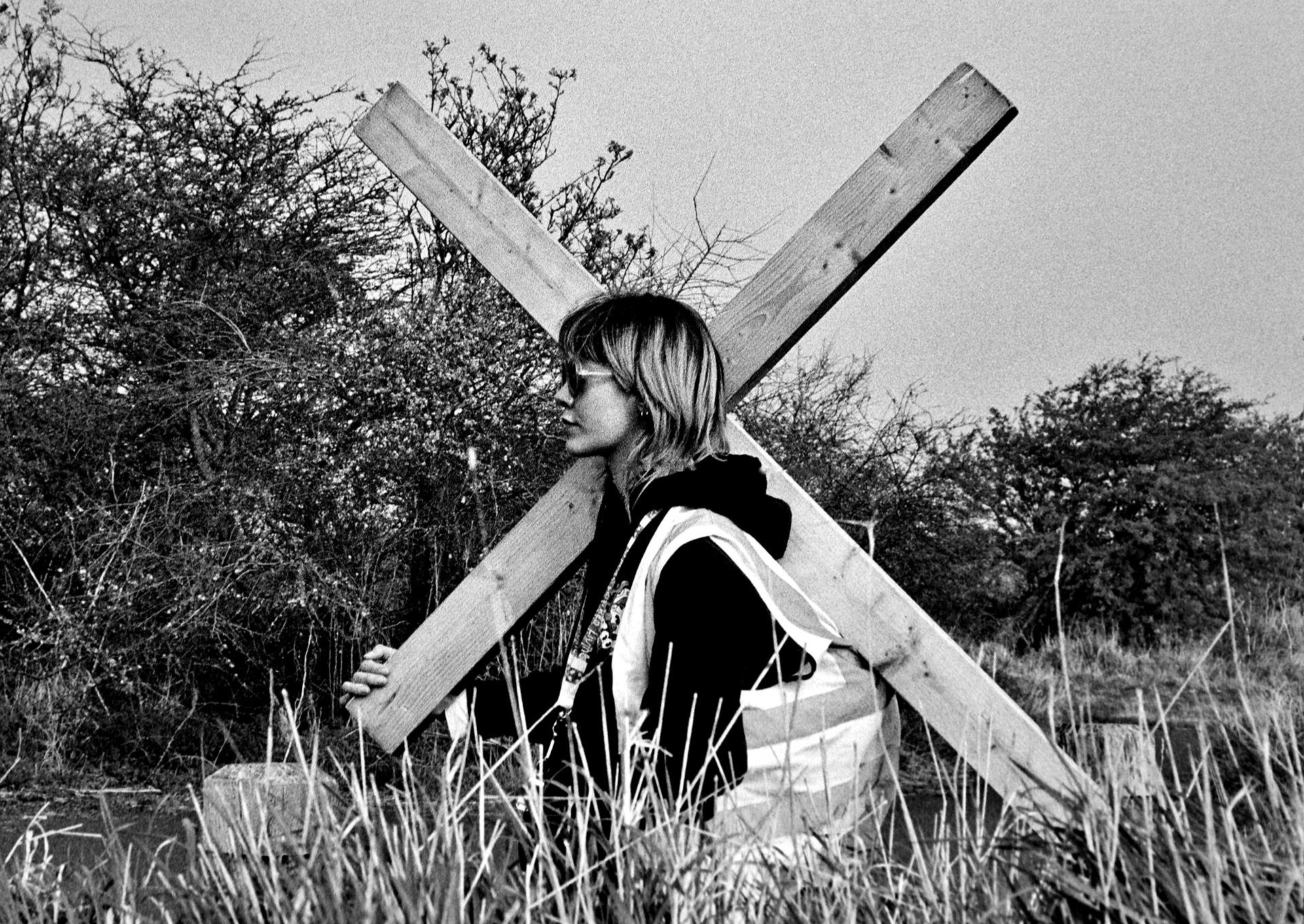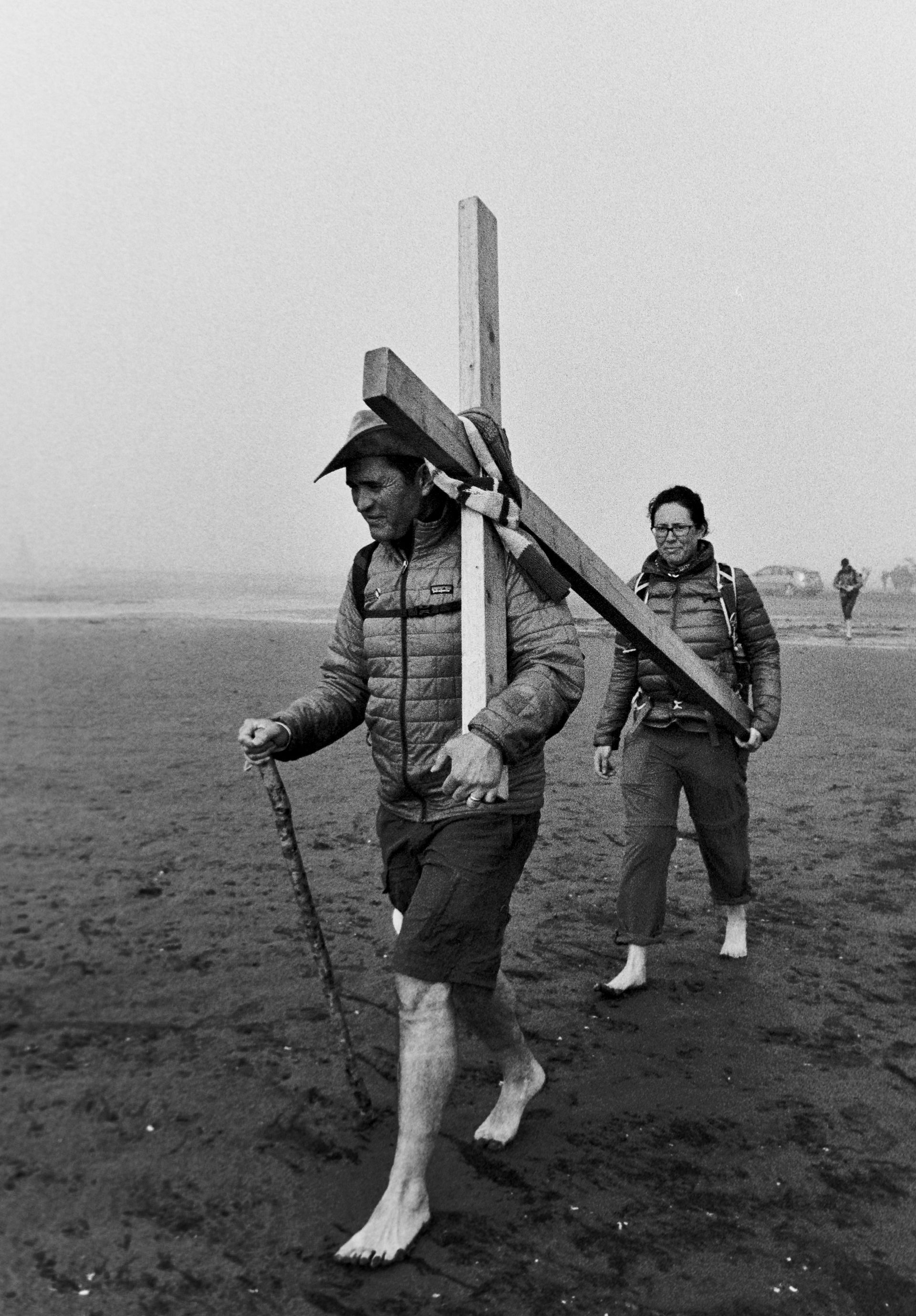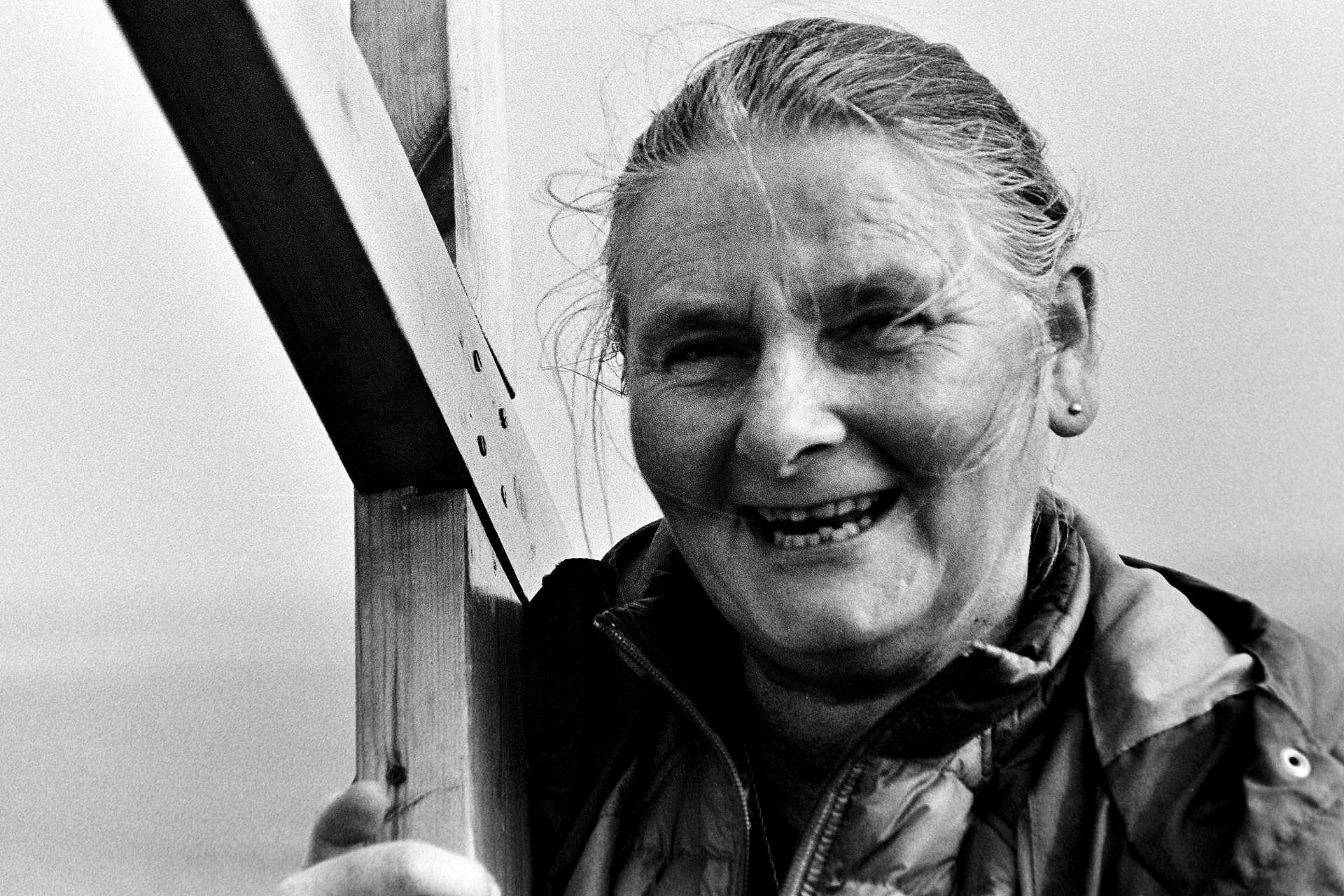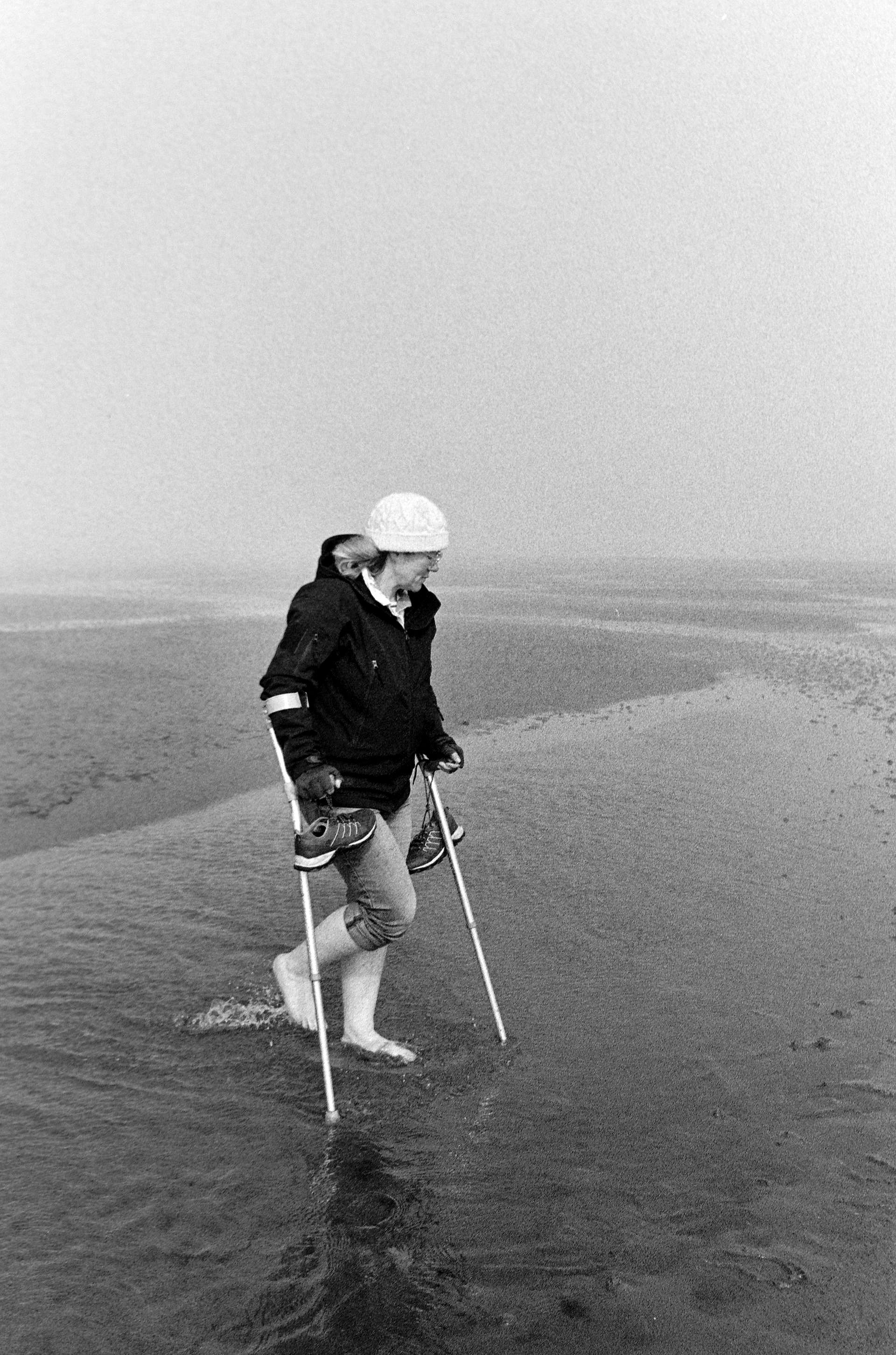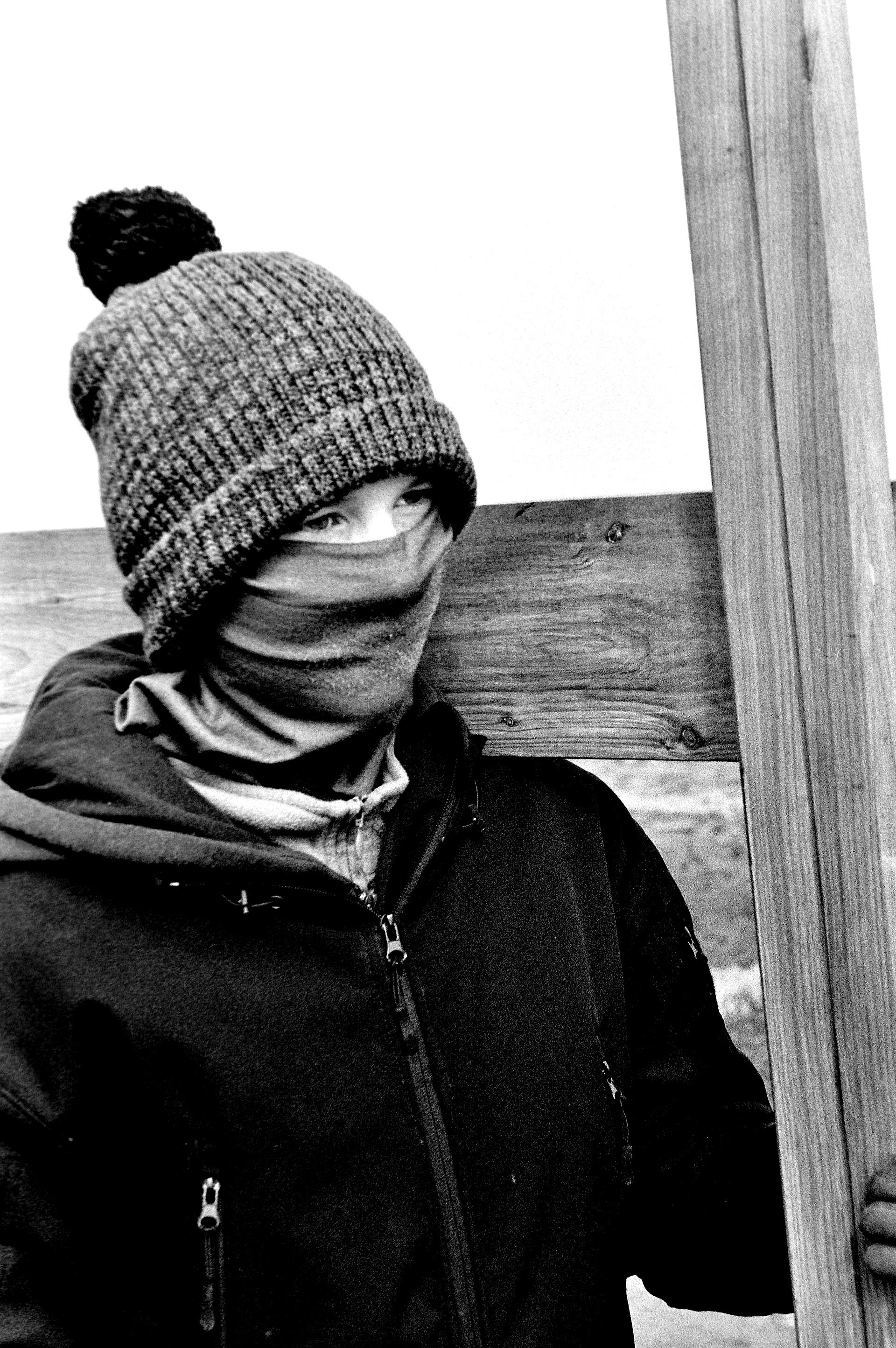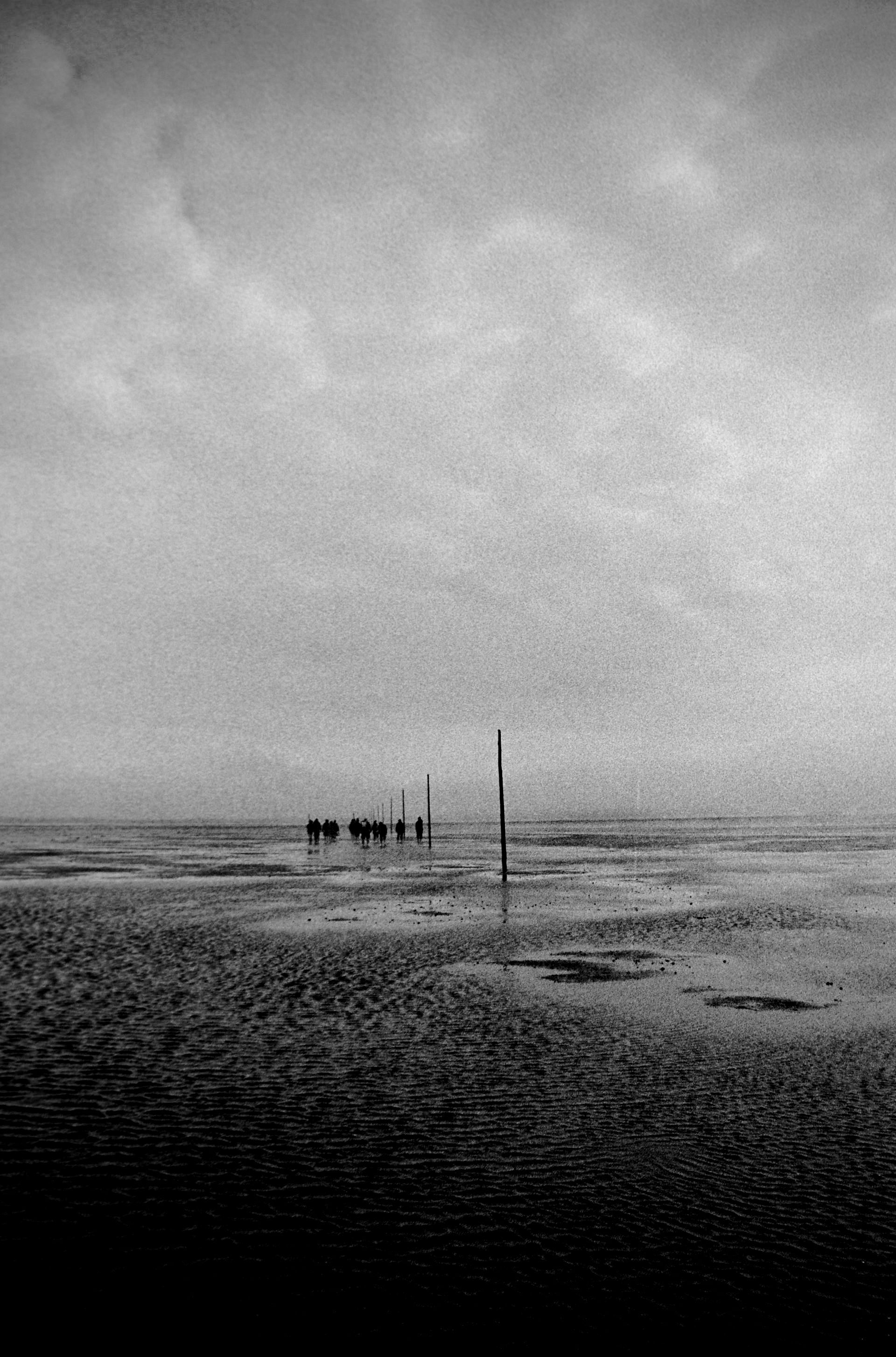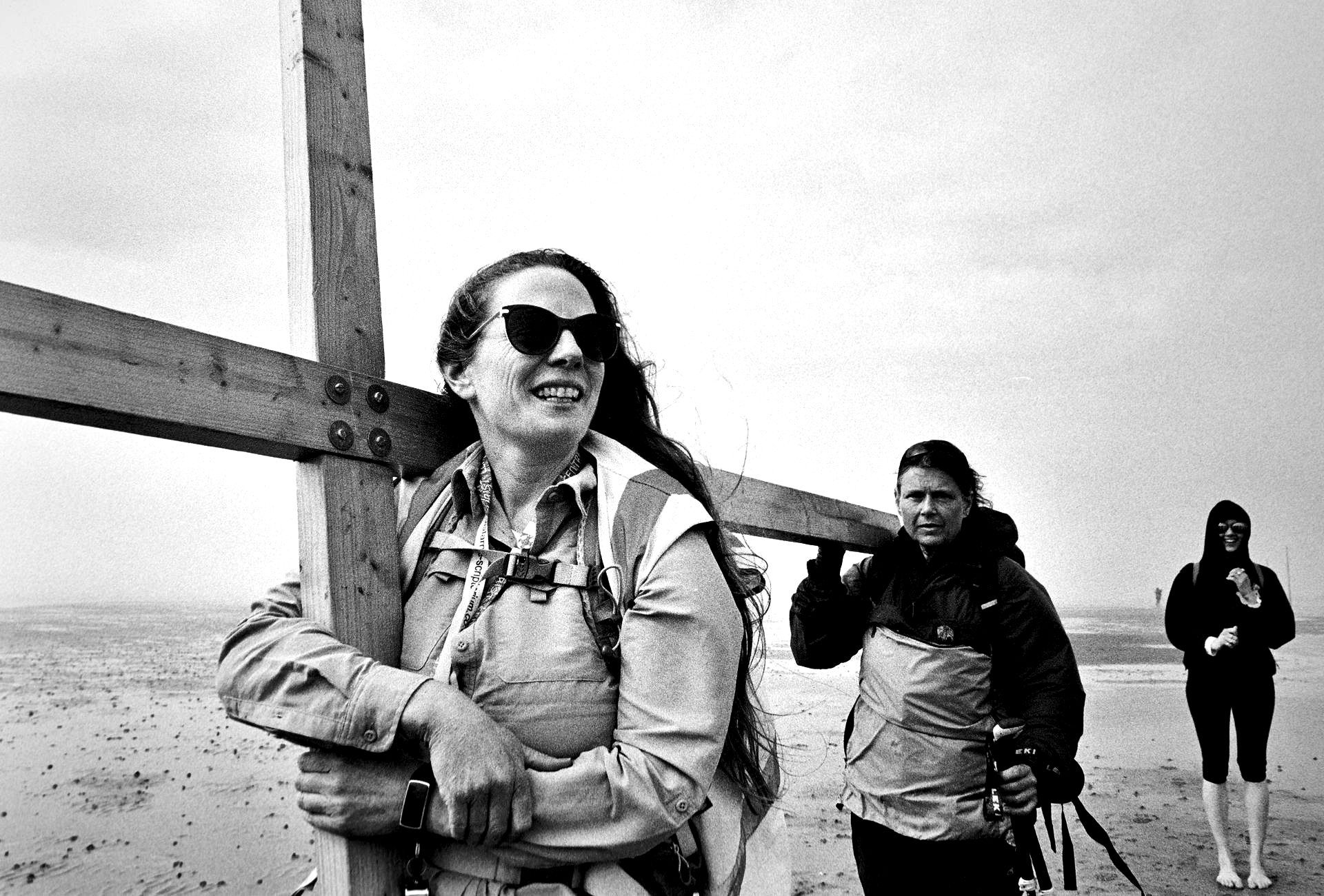NORTHERN CROSS
On land at the end.
Northumberland. 2022
I began this project in the 1980s. Religion in general fascinated me. I had been intrigued by the dedication and faith of people in history who had given their lives to their faith. For many, the sacrifice was total service to their God and to some it was their life under the regimes of persecution. Our history here in the British Isle has many references to such ultimate sacrifice ever since Christians stood up and declared their belief. King Edmund stood up to the Vikings around 869 AD and was martyred. Edmund Campion, a Catholic was hung, drawn and quartered at Tyburn in 1581 for conducting an underground ministry in Anglican England. Margaret Clitherow was crushed to death in 1586 for harbouring priests in York. More recently during the Pandemic, weddings and funerals were allowed but only if numbers fell within Government guidelines but church services were banned. Even so, alleged ‘parties’ were going on in Downing Street. A number of small groups of Christians (usually 10 people or less) held Masses secretly for fear of being persecuted.
Such dedication to faith motivated me to try to find and document Christians who placed their Faith above everything else in their lives. Northern Cross is one such group. Each year they begin their pilgrimage from Glasgow. It lasts seven days, spanning Easter Week as they walk across the border country and end up on Good Friday, on the Northumbrian coast. There they follow St. Cuthbert's route across the sands and through the waters dividing the mainland from Holy Island or Lindisfarne as it is sometimes called. This series is the story of that final day onto their destination on the island.
I met the group early on the last leg of the pilgrimage at Beal. This part would take us several hours, walking down to the beach and then across the sands. The walk had its dangers as sometimes people miscalculate the tide and can get cut off. There are a number of platforms raised high above the sea level for this eventuality. This part of the journey would take us across mud, sand, water and grass banks.
People embark on pilgrimages for all sorts of reasons. Ask any one of these people why they are doing it and you will get a different story. One woman told me how she had done part of the St. Cuthbert pilgrimage many years ago but had to stop because of ill health. Now, many years later she was doing this last part across the channel in order to gain a sense of completion. Life is a journey and it has many parts that make up the story. Finding completion is something many of us seek. I suppose we are searching for meaning. As a Christian, it is searching for purity. It is the journey towards God. For some, the hardship of the pilgrimage is about doing penance. It is recognising that Jesus is the Son of God and made the ultimate sacrifice at Easter by giving up his life as a means of paying the price for all the sins of Mankind. Christians who do penance are recognising the pain Jesus went through during those last hours on Good Friday as he hung on the cross. On many pilgrimages you see people walking barefoot or on their knees. This is their way of showing their humility. A pilgrimage provides a Christian with a way of reflecting and trying to understand their role in this world. Sometimes people who are not Christians accompany them and say they also get some kind of feeling during it. Perhaps for them, it becomes the start of their journey towards God. I can tell you that a pilgrimage is a very moving experience and it helps you understand that you are part of something bigger than yourself.
The Northern Cross began in 1975 when a student group who had just finished their pilgrimage to Walsingham in Norfolk decided to look for somewhere in the north of England. Their main reason for doing pilgrimages was to establish a Christian community to prepare for Easter. It also acts as a witness to their faith to people they pass on the route. They looked for a number of destinations and decided on Holy Island as it was one of the early places where Christianity was established in Britain. It seemed natural to complete the last day of the pilgrimage by crossing the sand using the original Christian causeway marked by withies. The starting point was Penrith but since then a number of places have been introduced to enable people from different locations to join. Today, the route has changed because of increased traffic on roads. The group adhere mainly to footpaths and the crosses have had to be made lighter because of the harsher terrain.
Pilgrims are drawn from all age groups and abilities. The only rule is that it is an ecumenical Christian pilgrimage. On the route pilgrims sing hymns to lighten the load and raise their spirits. Some may view people who engage in these kinds of thing as eccentric. However, history is peppered with people who offer up trials to God. It is their way of ‘staying on the cross’ in times of pain just as Jesus Christ did on Good Friday.
Walking for long distances across difficult terrain is hard at the best of times but without shoes make it something that tests levels of endurance, pain and motivation. It was April, the weather was cold, wet, misty and very overcast with rain coming in every so often. The water was very cold and a number of stretches needed to be crossed. Before reaching the last ‘river’ that remained at low tide we needed to get across a mud bank. The tide was on its way in. My feet sank to my shins in cold, liquid mud making walking harder. Eventually we reached the sea as it flowed into the channel separating the island from the mainland. The island shore was in sight and the promise of a whiskey, a towel and boots again. What struck me were the high spirits. The pilgrims had smiles on their faces as they carried their crosses towards the final destination. I was going to show a different picture of a pilgrim with his feet bare. I was going to talk about the significance of feet washing in the Bible and especially in the New Testament. I was going to talk about the humility involved in washing feet as our Lord demonstrated during the last supper and is re-enacted as the priest washes the feet of a number of people during the Maundy Thursday service. But I decided to show this picture that sums up the spiritual renewal that comes from a pilgrimage.
